Tooth sensitivity (also known as dentin hypersensitivity) is a common oral issue that many people face. It typically manifests as a sharp pain or discomfort when consuming cold, hot, sweet, or acidic foods and beverages. While tooth sensitivity may not be life-threatening, it can significantly affect daily eating habits and overall quality of life. In some cases, it may even lead to more severe oral problems. Therefore, taking effective preventive measures to reduce tooth sensitivity is crucial. This article will thoroughly explore the causes, symptoms, diagnosis, and preventive measures for tooth sensitivity, helping you effectively manage and prevent tooth sensitivity while maintaining oral health.
1. What Is Tooth Sensitivity?
Tooth sensitivity is a common condition that results in discomfort or pain when the teeth are exposed to certain stimuli, such as temperature changes or acidic, sweet, or sour foods. The pain typically occurs in certain areas of the teeth, particularly the roots or areas where the gums have receded. Tooth sensitivity can be intermittent and is often triggered by the consumption of specific foods or changes in temperature.
1.1 Causes of Tooth Sensitivity
The main cause of tooth sensitivity is the exposure of the dentin, the soft tissue layer beneath the enamel. Dentin contains many nerve endings, and when the protective enamel layer is worn away or the gums recede, the underlying dentin becomes exposed to external stimuli such as temperature changes, acidic foods, and sweet substances, leading to sensitivity.
The following are common causes of tooth sensitivity:
1.1.1 Gum Recession
Gum recession is one of the most common causes of tooth sensitivity. As people age or as a result of improper brushing techniques (such as brushing too hard), the gums gradually pull back, exposing the roots of the teeth. The roots do not have the protective enamel layer, making them more susceptible to sensitivity from temperature changes and other stimuli.
1.1.2 Enamel Wear
Tooth enamel is the hard, protective outer layer of the teeth that shields them from physical and chemical stimuli. However, excessive tooth wear—often due to teeth grinding (bruxism), incorrect brushing techniques, or the consumption of acidic foods (such as citrus fruits and carbonated beverages)—can lead to the erosion of enamel, exposing the underlying dentin and resulting in sensitivity.
1.1.3 Tooth Decay (Cavities)
Tooth decay is caused by the breakdown of the tooth surface by bacteria, resulting in cavities. When cavities progress and reach the dentin layer, stimuli like hot or cold foods, acidic substances, or sugary foods can directly affect the exposed dentin, triggering sensitivity.
1.1.4 Cracks or Fractures in Teeth
Cracks or fractures in the teeth can also expose the dentin. These cracks often occur on the chewing surfaces or sides of the teeth, and when consuming food or drink, these exposed areas of dentin may come into contact with external stimuli, leading to sensitivity.
1.1.5 Dental Procedures
Certain dental treatments, such as fillings, teeth whitening, and root canals, can also cause temporary tooth sensitivity. During these procedures, the teeth and gums may be irritated, leading to increased sensitivity.
1.1.6 Oral Hygiene Issues
Poor oral hygiene habits, such as infrequent brushing or ineffective cleaning, can contribute to plaque and tartar buildup, which can lead to gum inflammation and recession, ultimately increasing tooth sensitivity.
2. Symptoms of Tooth Sensitivity
Tooth sensitivity is typically characterized by discomfort or pain when the teeth are exposed to hot, cold, sweet, or acidic substances. Common symptoms of tooth sensitivity include:
- Sharp Pain or Discomfort: When teeth are exposed to cold, hot, sour, or sweet foods, a sharp pain or discomfort may be experienced.
- Persistent Discomfort: The sensitivity may worsen over time, especially during eating, drinking, or even exposure to air.
- Gum Bleeding or Swelling: If gum recession or gum damage is involved, the gums may appear red, swollen, or even bleed, which can exacerbate the tooth sensitivity.
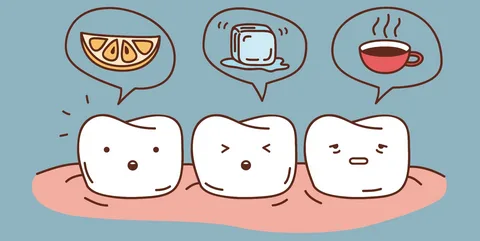
3. Diagnosing Tooth Sensitivity
The diagnosis of tooth sensitivity is primarily based on the patient’s medical history and a clinical examination. Dentists typically use the following methods to diagnose the condition:
- Medical History Inquiry: The dentist will ask about the patient’s oral health habits, symptoms, dietary habits, and other factors to determine potential causes.
- Clinical Examination: The dentist will examine the appearance of the teeth, particularly the roots and enamel, looking for signs of cavities, cracks, or gum recession.
- Cold or Heat Tests: The dentist may apply hot or cold stimuli to the teeth to confirm if the teeth are sensitive to temperature changes.
- X-ray Examination: X-rays help identify underlying issues such as cavities, fractures, or pulp infections that may contribute to tooth sensitivity.
4. Preventive Measures for Tooth Sensitivity
Tooth sensitivity is usually the result of multiple factors, so a comprehensive approach to prevention is essential. Below are several effective measures to prevent and reduce tooth sensitivity:
4.1 Proper Brushing Technique
Brushing your teeth is fundamental to preventing tooth sensitivity. Incorrect brushing can lead to gum recession and enamel wear, both of which can contribute to tooth sensitivity.
- Use a Soft-Bristled Toothbrush: Hard-bristled toothbrushes can damage the gums and enamel, leading to gum recession and enamel wear, which increase sensitivity. Choose a toothbrush with soft bristles and avoid brushing too hard.
- Correct Brushing Technique: Avoid vigorous brushing. Use gentle, circular motions to brush your teeth, ensuring all surfaces are cleaned without causing damage to the gums and enamel.
- Avoid Over-Brushing: Some people brush their teeth too frequently or for too long, which can lead to enamel wear. It’s recommended to brush twice a day for two minutes each time.
4.2 Use of Fluoride Toothpaste
Fluoride toothpaste helps strengthen tooth enamel and reduces the risk of tooth sensitivity. Fluoride also forms a protective barrier on the teeth, making them more resistant to temperature changes and acidic substances.
- Choose Toothpaste for Sensitive Teeth: Many toothpastes designed for sensitive teeth contain compounds like potassium nitrate or strontium chloride, which help reduce sensitivity by blocking the nerve pathways in the dentin.
- Brush Twice a Day: Brushing with fluoride toothpaste twice daily helps maintain strong enamel and reduces sensitivity.
4.3 Protect Teeth from Wear
Tooth wear is a common cause of sensitivity, especially for those who grind their teeth at night. The following steps can help reduce wear and prevent sensitivity:
- Use a Night Guard: If you grind your teeth at night (bruxism), consider wearing a custom-made night guard to protect your teeth from excessive wear.
- Avoid Hard Foods: Avoid chewing on hard objects like ice, nuts, or pencils, as these can lead to cracks or enamel erosion.
4.4 Be Mindful of Dietary Habits
Diet plays a significant role in tooth sensitivity. Acidic foods and beverages (such as citrus fruits and carbonated drinks) can erode enamel, increasing the risk of sensitivity.
- Limit Acidic Foods: Avoid consuming excessive amounts of acidic foods and drinks, including citrus fruits, vinegar, and carbonated beverages, to protect tooth enamel.
- Avoid Frequent Snacking: Snacking throughout the day increases the time your teeth are exposed to food residues and acids, promoting enamel erosion.
- Eat Calcium-Rich Foods: Foods rich in calcium and vitamin D, such as dairy products and leafy greens, help strengthen teeth and reduce sensitivity.
4.5 Regular Dental Checkups
Regular dental checkups are crucial for identifying and addressing potential causes of tooth sensitivity, such as cavities, gum recession, enamel wear, or cracks in teeth. Early intervention can prevent the condition from worsening.
- See Your Dentist Regularly: Schedule an annual dental checkup or more frequently if you have a history of tooth sensitivity or other oral issues.
- Treat Cavities and Other Problems Early: Address cavities, cracked teeth, or gum disease promptly to prevent further damage and reduce sensitivity.
4.6 Prevent Tooth Wear and Gum Recession
- Avoid Brushing Too Hard: Excessive brushing can lead to gum recession and enamel wear, increasing sensitivity. Use gentle brushing motions to clean your teeth.
- Proper Oral Cleaning Techniques: In addition to brushing, use dental floss to clean between your teeth, and avoid excessive use of hard toothbrushes or other cleaning tools.
5. Conclusion
Tooth sensitivity is a common oral issue that, while not life-threatening, can severely impact your daily life and eating habits. Through proper oral care, healthy dietary choices, and regular dental visits, you can effectively prevent and manage tooth sensitivity. Once sensitivity symptoms appear, it is important to seek professional treatment to identify the underlying cause and address it early. Maintaining good oral hygiene, using appropriate dental products, and protecting your teeth from wear and erosion are key strategies for preventing tooth sensitivity and promoting overall oral health. By taking these preventive measures, you can enjoy a healthy, comfortable smile and improve your quality of life.

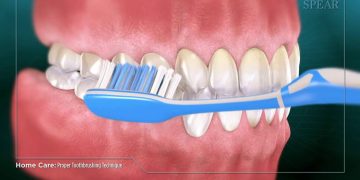
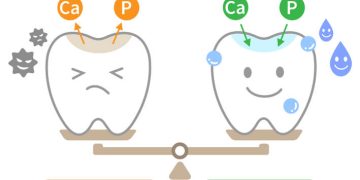
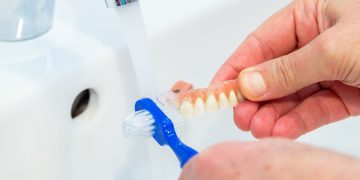




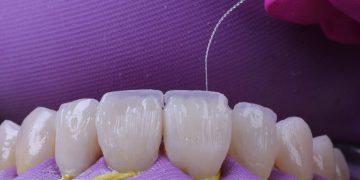
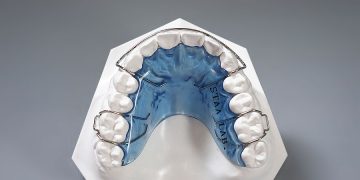

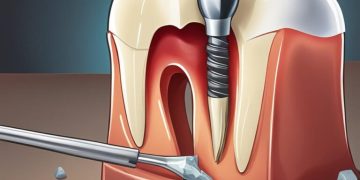



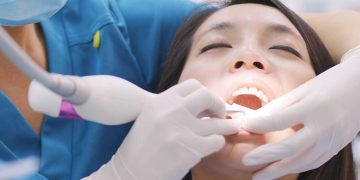

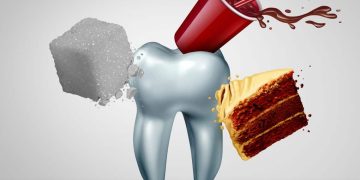













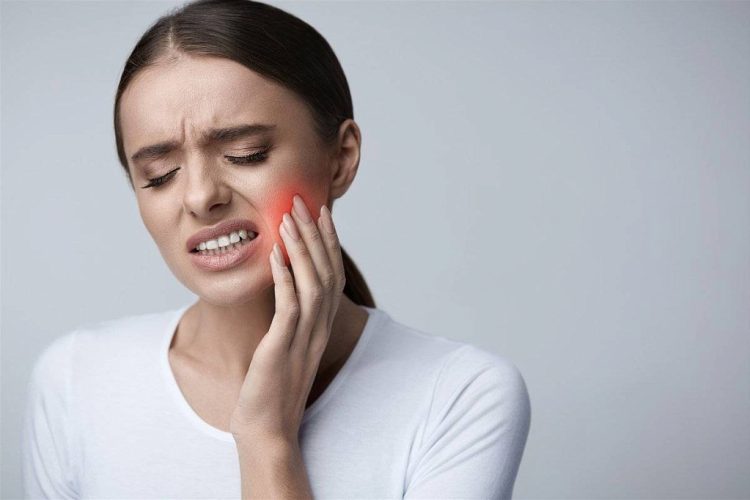













Discussion about this post